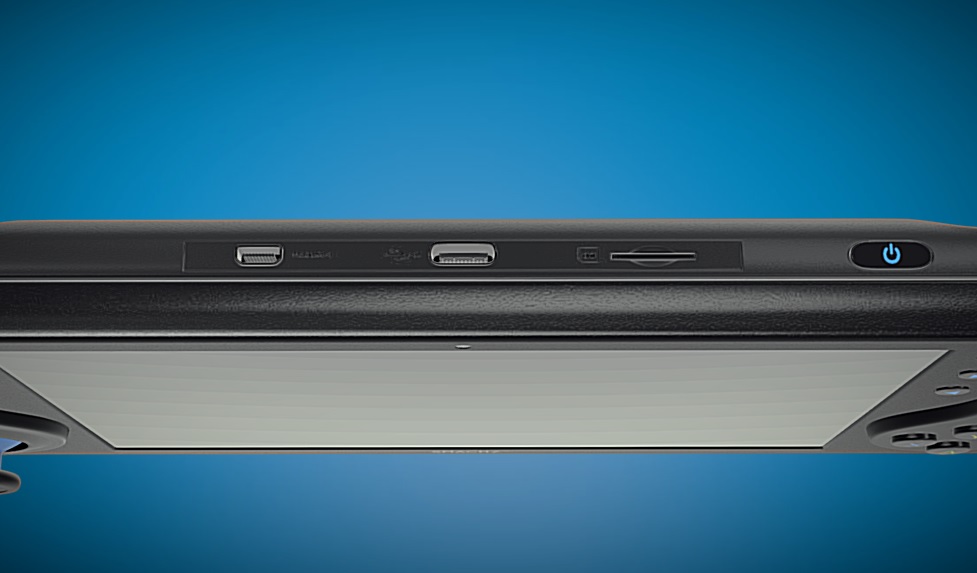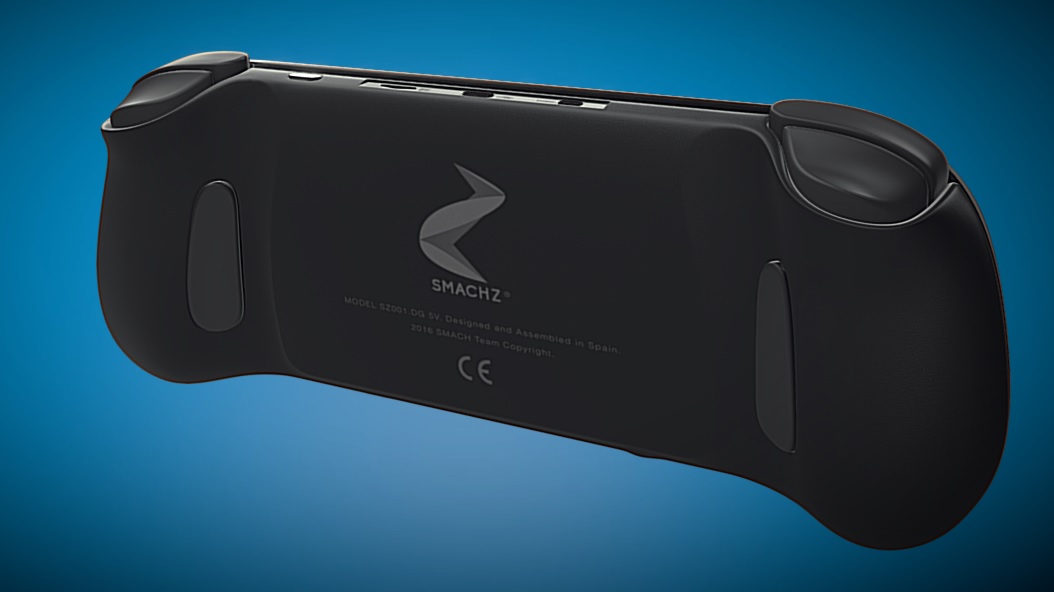Smach Z: A Modular Gaming PC In Your Hands
ImasD Technologies, a Spain-based modular device manufacturer, began a Kickstarter campaign for a product called the Smach Z, which is a handheld gaming PC that the company claimed is powerful enough to play any AAA game title at its native resolution.
Don’t Call It Click-ARM, It’s Rhomb
ImasD is no stranger to modular products. The company previously made headlines with its Project Ara-challenging Click-ARM One tablet. The company developed the new Smach Z with the same technology, which was formerly called Click-ARM. Now, the hardware and software platform is called Rhomb, with the interchangeable 50Gbps interfaces now referred to as Rhomb sockets that are occupied by Rhomb modules. When we last spoke with ImasD the company was unsure how it would fare with a Kickstarter campaign, but now it’s doing exactly that with its rebranded modular technology aimed at a different market: enthusiast gamers.
Specifications
The Smach Z is a handheld modular computer that comes with an AMD Merlin Falcon RX-421BD SoC that sports four cores clocked at 2.1GHz with a 3.4GHz boost clock and a 35W TDP, although the device restricts this to 15W. The chip features Radeon R7 graphics clocked at 800MHz, which sports 8 compute units (CUs) and 512 shader cores.
The Smach Z also features a 6-inch 1920x1080 5-point capacitive touchscreen. The thumb pads above the analog stick and four gamepad buttons on each side of the device are haptic-feedback sensors (which the company calls "Z-Pads") that also respond to your touch. There are also grip buttons on the rear and two triggers on each side, at the top of the device.
There are two different versions of the Smach Z, which is determined by the memory and storage capacities. The regular version comes with 64GB of eMMC storage and 4GB of RAM. The Smach Z Pro doubles the storage and memory with a 128GB SSD (using the M.2 socket instead of an eMMC Rhomb module) and 8GB of RAM. The Pro version also features a PCIe-slotted SIM card module for 4G connectivity, where available, and a 3MP front camera.
The Smach Z sports a USB 3.0 Type-C port, in addition to a mini-HDMI output and a microSD card reader, allowing you to plug in more storage or peripherals. Internet connectivity is limited to Wi-Fi--unless you have a 4G SIM in the Pro version--which is provided by a Rhomb module that also provides Bluetooth.
Compatibility And Cooling Issues?
The SmachZ is also available with two operating system options. You can either get it with Windows 10 or a special Linux-based Smach Z OS, which the company claimed will offer a better interface and user experience. Although the Windows 10 version of the Smach Z has a greater number of compatible applications, the company recommended the Linux-based platform, claiming that it would perform better with the device.
Get Tom's Hardware's best news and in-depth reviews, straight to your inbox.
The company also said that it sees thermal load being a potential issue:
"One of the main focuses on the final version will be keeping the temperature low only using passive cooling."
The 15W CPU power ceiling may help with this potential issue, but it certainly sounds like even the manufacturer isn't sure how the use of passive cooling will play out until the Smach Z rolls off the assembly line.
How To Get Smach Z
The Smach Z and Smach Z Pro can be preordered now from ImasD’s Kickstarter page. The Early Bird Smach Z starts at around $307 USD, with the Pro model going for about $548 USD. ImasD Technologies plans to ship the Smach Z in April 2017.
Although we can't imagine the device will give you a 60 FPS game experience, it will be interesting to see if the Smach Z can deliver on its promise of playing AAA games on a handheld device.
Derek Forrest was a contributing freelance writer for Tom's Hardware. He covered hardware news and reviews, focusing on gaming desktops and laptops.
-
amateramasu They threw all the interesting info into a link to IMasD's website about their modular system: http://whatzznew.com/Reply -
jdwii Ah Nintendo switch if Nintendo went with Amd instead of Nvidia thank god they didn't cause this is probably much weaker then Nvidia's X1(maybe X2?)Reply -
ayashi What exactly is a "AAA" game? I have seen nothing but conflicting data when searching other sites and sources. I'm curious what Tomshardware as a community considers it to represent?Reply


